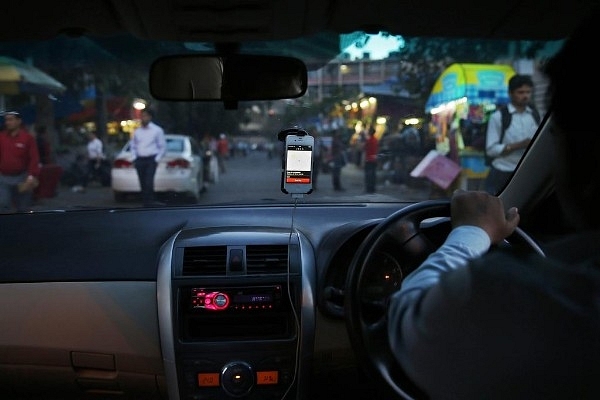Ideas
Why Dynamic Pricing Is The Way To Go For Ride-Hailing Services
- Why market forces are better at balancing demand and supply and ensuring we do right by both drivers and riders

Ride-hailing service (Photo: The National)
Gone are the days when prices of most commodities were fixed by the government. The introduction of big data has clearly helped many of the conventional organisations to adopt dynamic pricing. As the famous French Physiocrats said long ago, “Market will work for societal good if let alone.”
Dynamic pricing works on the basis of demand and supply and the customer’s ability to pay the price. This is the “practice of pricing items at a level determined by a particular customer’s perceived ability to pay”. In the Indian context, dynamic pricing in transport can be seen at work popularly in app-based ride-hailing services like Uber and Ola, and fares of airlines and the railways.
If you notice airline prices rise during Deepavali or Durga Puja, it’s generally because of an algorithm that detects a hike in incoming requests for those particular airways, the time and the location. In economic terms, this is called “price optimisation” or the determination of fare based on real-time demand.
App-based cabs like Uber use dynamic pricing. Many a time, due to mismatch between supply and demand, dynamic prices have to be invoked. This makes sure, in the case of cabs, for instance, that passengers can always get a ride when they need it. Otherwise who would have thought of operating cabs and taxis at midnight or even 24x7?
Many of the taxis around the world that continue to use conventional norms of pricing have either perished or withered from the market. The quality of dynamic pricing is that it provides an opportunity for proper utilisation of resources.
Wharton School professor Kartik Hosanagar wrote in the Economic Times that “there is a misperception that dynamic pricing is an exploitative pricing mechanism, explaining that the fact that supply and demand are not always perfectly balanced justifies resort to dynamic pricing”. Moreover, in a country like India, where demand outpaces supply, dynamic pricing is logical since it makes services available to people who need it and can pay for it. For ride-hailing cabs, for instance, during peak hours or in high-traffic areas, dynamic pricing makes sure that drivers are compensated adequately for all the time spent in traffic.
There can, however, be cases when dynamic pricing would take prices beyond the reach of the regular person. To make it work in such a case, the government can consider introducing regulatory mechanisms to enable the right level of competition in the market. Price caps and floors won’t work as they are a deterrent to innovation and go against the essence of the free market.
The central government knows there is much to gain from dynamic pricing. Trains like Rajdhani Express and Shatabdi Express have experimented with the concept and this has led to the accrual of high commercial gains; the Indian Railways has received an additional revenue of Rs 500 crore in less than a year.
Let’s not forget, dynamic pricing is not new to India – far from it. From the small-time vegetable vendor to auto-rickshaws – all of them use it. That is why auto-rickshaws, for instance, charge a higher fare during peak and odd hours and vegetable vendors charge more for certain vegetables during off season. It helps compensate the mismatch of demand and supply in the market.
From a policy perspective, the government should just lay the right platform for competition and not engage in excessive regulation such as introducing price caps. The benefits of dynamic pricing will play out with the pros far outweighing the cons.
This article is part of our special series on urban mobility.
Support Swarajya's 50 Ground Reports Project & Sponsor A Story
Every general election Swarajya does a 50 ground reports project.
Aimed only at serious readers and those who appreciate the nuances of political undercurrents, the project provides a sense of India's electoral landscape. As you know, these reports are produced after considerable investment of travel, time and effort on the ground.
This time too we've kicked off the project in style and have covered over 30 constituencies already. If you're someone who appreciates such work and have enjoyed our coverage please consider sponsoring a ground report for just Rs 2999 to Rs 19,999 - it goes a long way in helping us produce more quality reportage.
You can also back this project by becoming a subscriber for as little as Rs 999 - so do click on this links and choose a plan that suits you and back us.
Click below to contribute.
Latest